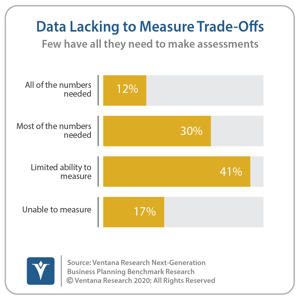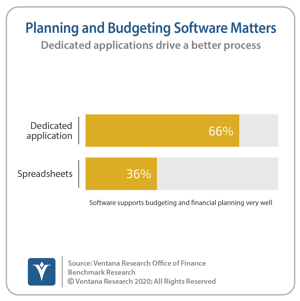A great deal has changed in how finance and accounting departments operate since the start of 2020. To cope with unprecedented conditions, many departments have found that significant changes to their processes and operating methods are not only possible, they’re necessary. With workers unable to be in office, organizations have learned how to work virtually using videoconferencing, and adopted a variety of new software that make it possible to work under any conditions. Software that automates the close, for instance, smooths the execution of processes by managing hand-offs, reviews and approvals even when face-to-face interaction isn’t feasible.
Change is necessary because in a rapidly evolving environment, executives have demanded more in-depth guidance from financial planning and analysis (FP&A) groups on the likely impact of very different possible scenarios. Guidance is needed to help them grapple with contingencies in an uncertain future, and find opportunities to gain competitive ground in the economic downturn and in the recovery that will follow.
As the world’s economies progress over the next 12 to 18 months, scenario planning will be essential for any organization. More than a decade ago, I coined the term Integrated Business Planning (IBP) to describe an approach to planning and budgeting that is faster, more dynamic and therefore more accurate and adaptable as events unfold. IBP is a technology- and process-driven approach to planning that connects all the forward-looking activities in which organizations routinely engage, including marketing, sales, customer, supply chain and workforce planning, as well as budgeting, in a unified process using shared, consistent data. It can substantially cut the time spent creating and updating plans, making it possible for FP&A groups to quickly explore different scenarios and rapidly develop detailed assessments of their impact. IBP provides senior executives the information they need in a short enough time to make planning actionable.
Unlike the slow-and-steady recoveries from a “normal” recession, there are many potentially consequential events that will affect an organization’s supply and demand. Some of these events such as taxes or the availability of vaccines are binary because they’ll either happen or they won’t. When exactly these events occur is equally important. Unlike planning and budgeting in a steady-state economy when relatively minor variations of a base-case scenario can be sufficient, planning today must incorporate a wide range of scenarios with very different possible outcomes. Gaining an edge on the competition requires a scenario planning strategy to evaluate multiple contingencies so that the leadership team can better understand their options and the impact of various trade-offs.

Contingency planning is a great idea, but most organizations aren’t yet able to accomplish this in any sort of rigorous way. Our Next-Generation Business Planning research shows that almost nine out of ten organizations don’t have all the numbers they need to do effective scenario planning, and a majority have little or no data to guide them in measuring and making trade-offs. To complicate things further, in most organizations planning can take weeks, sometimes months, because of the time it takes to develop a full, detailed plan, and budget for a particular scenario. And once the budget is assembled, most companies can’t quickly drill back into the assumptions underlying each business silos budget.
There is a technology roadblock behind these issues: using desktop spreadsheets as the basis for enterprise-wide planning and budgeting. Our Office of Finance research found that only 36% of organizations that use spreadsheets to support planning and budgeting have a process that works well compared to 66% that use a dedicated application.
Contingency planning requires a process that’s accurate, efficient and fast. To achieve that, an organization must build a planning process built around dedicated planning and budgeting software. One of the prime objectives of taking an IBP approach is to speed up the time it takes to complete a full planning and budgeting cycle. If it takes weeks or months, contingency planning is not practical enough to do more than once or twice a year. Planning and budgeting then becomes more of a reactive process rather than one that can drive the organization with better, more informed decision-making.
process that’s accurate, efficient and fast. To achieve that, an organization must build a planning process built around dedicated planning and budgeting software. One of the prime objectives of taking an IBP approach is to speed up the time it takes to complete a full planning and budgeting cycle. If it takes weeks or months, contingency planning is not practical enough to do more than once or twice a year. Planning and budgeting then becomes more of a reactive process rather than one that can drive the organization with better, more informed decision-making.
Speed breeds agility. Fast planning cycles means that your organization can adjust more frequently and course correct as needed, quickly changing circumstances in uncertain times. Substantially faster planning cycles are achievable. By way of an analogy, look at pit stops in Formula 1 racing today compared to the 1960s. Back then, changing four tires took about a minute, and that was considered competitive. Today, the average time is 2.4 seconds. In other words, if it takes your team a minute to change four tires, you’re out of the race. Improvement of that magnitude requires reducing the time needed to complete processes and applying technology and continual process improvement. Shortening budget cycles and using software to support that objective are the keys to speeding up planning and budgeting, and achieving agility.
Dedicated planning and budgeting software has been around for decades but still isn’t widely used. This point was abundantly clear in our Next-Generation Business Planning benchmark research, which found that two-thirds of larger organizations still use desktop spreadsheets for budgeting. Pulling together a budget or plan from a tangle of spreadsheets requires a great deal of effort. Furthermore, spreadsheets eliminate accountability because it’s hard to drill back down into the numbers to see the underlying assumptions. Spreadsheets are rife with errors, and disputes over what constitutes the “right” number often lengthen the process and undermine cooperation. Some of the reasons why dedicated planning and budgeting applications work better are grounded in technology. Dedicated applications address all these issues while enabling faster, more accurate planning cycles because they facilitate instantaneous consolidation. Software working from a common database also ensures data quality and consistency.
Integrated Business Planning provides a strategic advantage in times of stress and uncertainty by making rapid scenario planning feasible. IBP is also valuable in less volatile times by reducing the time organizations spend on planning, and making those subsequent plans more actionable. It also makes budgeting easier for the budget owner. Organizations that have a calendar fiscal year are about to enter their traditional budget season. I recommend that FP&A groups take advantage of current conditions to drive change in how their organization plans and budgets, embracing IBP and using technology to make their planning and budgeting processes faster, more accurate and more agile under any circumstances they may face.
Regards
Robert Kugel



 process that’s accurate, efficient and fast. To achieve that, an organization must build a planning process built around dedicated planning and budgeting software. One of the prime objectives of taking an IBP approach is to speed up the time it takes to complete a full planning and budgeting cycle. If it takes weeks or months, contingency planning is not practical enough to do more than once or twice a year. Planning and budgeting then becomes more of a reactive process rather than one that can drive the organization with better, more informed decision-making.
process that’s accurate, efficient and fast. To achieve that, an organization must build a planning process built around dedicated planning and budgeting software. One of the prime objectives of taking an IBP approach is to speed up the time it takes to complete a full planning and budgeting cycle. If it takes weeks or months, contingency planning is not practical enough to do more than once or twice a year. Planning and budgeting then becomes more of a reactive process rather than one that can drive the organization with better, more informed decision-making.








